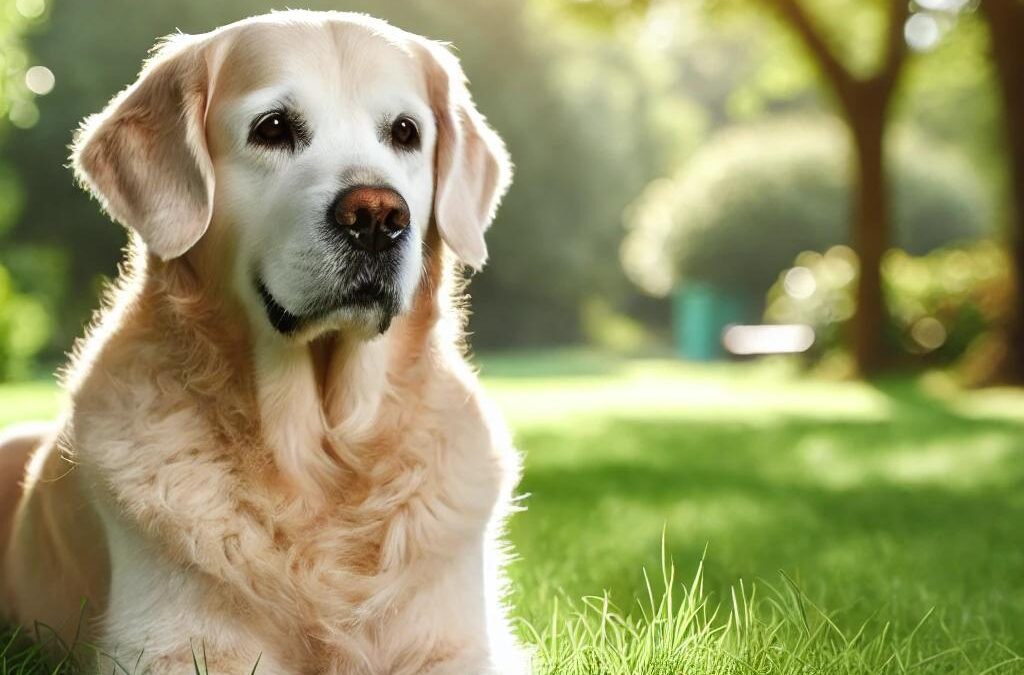As dogs age, they become more susceptible to various health issues, including cancer. One type of cancer that disproportionately affects senior dogs is lung cancer. While lung cancer in dogs is relatively rare, older dogs are at a higher risk of developing this disease. Understanding the reasons behind this increased risk and the symptoms of lung cancer in senior dogs can help pet owners take preventive steps and ensure early detection.
Why Are Senior Dogs at Greater Risk for Lung Cancer?
- Natural Aging Process
As dogs age, their bodies undergo a natural decline in cellular regeneration and immune function. This means that older dogs are more likely to experience mutations in their cells, which can lead to the development of cancer. Cells in the lungs, like other tissues in the body, are subject to this process, making senior dogs more vulnerable to lung tumors. - Longer Exposure to Environmental Toxins
Senior dogs have been exposed to environmental toxins for a longer period of time compared to younger dogs. Toxins such as pollutants, chemicals, and even secondhand smoke can accumulate in their bodies over the years. These substances can damage lung tissue, making it more likely for tumors to form. Dogs living in urban environments or households where smoking occurs may face an even higher risk. - Weakened Immune System
The immune system plays a crucial role in identifying and destroying cancerous cells before they can spread. However, as dogs age, their immune system weakens, making it less effective at eliminating abnormal cells. This decline in immune function increases the likelihood of lung cancer developing in senior dogs. - Chronic Respiratory Conditions
Older dogs are more prone to chronic respiratory conditions such as bronchitis or infections, which can weaken lung tissue over time. Chronic inflammation in the lungs can create an environment where cancer cells are more likely to thrive. Dogs with a history of respiratory issues should be monitored closely for signs of lung cancer as they age.
Common Symptoms of Lung Cancer in Senior Dogs
Lung cancer in dogs often develops without noticeable symptoms in its early stages, making it challenging to detect. However, as the disease progresses, certain signs may appear. These include:
- Persistent cough: A dry, persistent cough that does not resolve over time may be an early sign of lung cancer.
- Difficulty breathing: Labored breathing or shortness of breath could indicate a problem with the lungs.
- Lethargy: A noticeable decrease in energy levels or reluctance to exercise can be a warning sign.
- Loss of appetite: If your senior dog suddenly loses interest in food, it could be a sign of illness.
- Unexplained weight loss: Rapid or unexplained weight loss is often a symptom of cancer in dogs.
- Nasal discharge: Any unusual discharge from the nose may be related to lung problems.
If your senior dog exhibits any of these symptoms, it’s essential to consult a veterinarian for a thorough examination. Early detection of lung cancer can improve the chances of successful treatment.
Diagnosis of Lung Cancer in Senior Dogs
If lung cancer is suspected in a senior dog, a veterinarian will typically begin with imaging tests such as x-rays or ultrasounds to check for tumors in the lungs. These tests can reveal the size, location, and spread of any abnormal growths. In some cases, additional tests like CT scans or biopsies may be needed to confirm a diagnosis and determine the type of lung cancer.
Types of Lung Cancer in Senior Dogs
There are several types of lung cancer that can affect dogs, the most common being adenocarcinoma, which originates in the cells lining the lung tissues. Other types include squamous cell carcinoma and bronchial carcinoma. These cancers can vary in terms of aggressiveness and potential to spread (metastasize) to other organs.
In older dogs, tumors are often more aggressive due to the weakened immune system and prolonged exposure to risk factors.
Treatment Options for Lung Cancer in Senior Dogs
Treatment for lung cancer in senior dogs depends on the type and stage of the cancer. Common treatment options include:
- Surgery: If the tumor is localized and has not spread, surgery to remove the affected lung lobe may be an option. This can be a highly effective treatment if the cancer is caught early.
- Chemotherapy: Chemotherapy may be used in cases where surgery is not possible or when the cancer has spread to other parts of the body. Chemotherapy helps slow the progression of the disease, though it may not cure it.
- Radiation Therapy: Radiation is sometimes used in conjunction with surgery or chemotherapy to shrink tumors and alleviate symptoms.
- Palliative Care: In cases where the cancer is advanced, palliative care may be recommended to improve the dog’s quality of life and manage symptoms like pain or difficulty breathing.
How to Prevent Lung Cancer in Senior Dogs
While lung cancer cannot always be prevented, there are steps you can take to reduce your dog’s risk:
- Avoid secondhand smoke: Do not smoke around your dog, as exposure to secondhand smoke increases the risk of lung cancer.
- Keep your dog active: Regular exercise helps maintain lung health and boosts the immune system.
- Provide a healthy diet: A balanced diet rich in antioxidants can help support your dog’s overall health.
- Regular veterinary checkups: Annual or biannual vet visits are crucial, especially for senior dogs, to catch any signs of cancer early.
As dogs age, they become more susceptible to lung cancer due to factors such as a weakened immune system, longer exposure to toxins, and chronic respiratory conditions. Pet owners should be aware of the symptoms of lung cancer in senior dogs and seek veterinary care if any signs arise. Early diagnosis and appropriate treatment can improve your dog’s quality of life and longevity.















